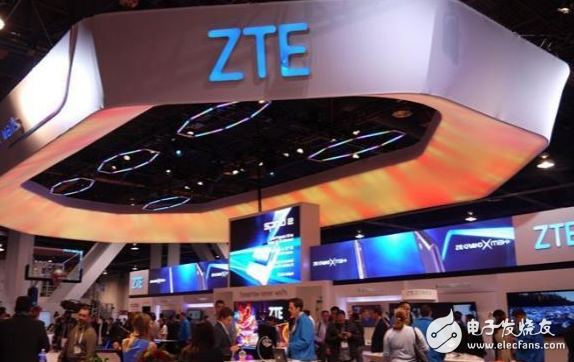The hot event that started the first shot in the domestic mobile phone market was actually ZTE, but it was not a fire, but a dumb gun. ZTE has laid off 3,000 people, of which the proportion of mobile phone business is the heaviest, and the old mobile phone manufacturers are now dying. Can't help but sigh, once dared to compete with Huawei for the first time, and now sales are not as good as small peppers, what happened to ZTE mobile phone?
It is reported that ZTE plans to lay off 3,000 employees, and the number of layoffs will account for about 5% of the entire company. The layoffs will be completed in the first quarter of this year. The news also shows that the ZTE terminal where ZTE's mobile phone business is located is the focus of the layoffs. The global mobile phone business will cut 600 employees, equivalent to 10% of the company's mobile phone business. A senior executive of ZTE said that more than 20% of ZTE’s mobile phone business in China will be fired.
In fact, in order to improve the company's operations, ZTE had already had measures to divest its subsidiaries and lay off employees in 2012. At the end of 2012, due to the huge losses in the first three quarters, ZTE had laid off 15% of its workforce, and its scale exceeded 10,000. Some projects were forced to be cancelled, and some employees were reduced in salary.
Industry analysts pointed out that the reason why the mobile phone business is relatively large is due to the US Department of Commerce's sanctions against ZTE last year, and the other side is the rapid rise of Huawei, OPPO, vivo, Xiaomi and other manufacturers, plus "China" Cool Link "because of the reshuffle of telecom operators, the status of ZTE's mobile phone business is very slim.
According to market research firm IDC, ZTE’s global smartphone shipments in 2016 fell sharply by 36.5% compared to 2015. According to statistics, in the third quarter of 2016, ZTE’s domestic market was sold out of the market, and the brand entered the downtrend channel. It was even surpassed by the second and third-line brands such as Xiaojiao, with sales of only 2.9 million units. Domestic mobile phones have developed rapidly in recent years. ZTE’s mobile phone business has been regressing and continues to consume the potential accumulated by ZTE Group for many years.
According to foreign media reports, the management personnel of the overseas branch of ZTE's mobile phone business said that some employees had tried to apply for competitor Huawei, and it was considered that the 'unstable factor' must be reduced. Nowadays, Huawei's overseas business has achieved a triumphant victory. It has fully entered the United States during the CES period and vigorously explored the market. It is bound to madly dig the employees of ZTE, which will have a huge impact on ZTE's well-developed North American business. Coupled with the fact that ZTE and Huawei have always been inconsistent, it is inevitable to stage the 'Walli Fight' drama. In the face of Huawei's aggressiveness, this time ZTE may be defeated again.
Regarding the layoffs, ZTE’s relevant person in charge responded: “The company has more than 80,000 employees, and the annual turnover rate is about 5-8%, which is a normal level in the industry.†So far, ZTE has not answered the fact that layoffs do exist. . All of the above indications indicate that more than 20% of the mobile phone business layoffs are high probability events.
In fact, in the second half of 2016, ZTE’s mobile phone business unit experienced major personnel adjustments. On October 24 of that year, ZTE internally issued a notice of adjustment of personnel, and Yin Yimin, executive director of ZTE Corporation, was appointed as the head of the mobile phone business. On November 14, after Yin Yimin was transferred for 20 days, some media revealed that ZTE had announced that Yu Yifang would no longer serve as the general manager of ZTE Terminal China. The position was temporarily taken over by Bai Bo, vice president of ZTE Corporation.
However, ZTE's domestic mobile phone business accounts for a small proportion of the company's overall revenue. The company's main revenue comes from the operator's network equipment. The company's R&D investment is mainly in 5G, SDN, chip and other aspects, expanding the emerging fields such as artificial intelligence. ZTE's position within the group is far less than that of Huawei's consumer business. It is also understandable that input and output are not proportional.
In addition, as the 4G network of China's telecom operators is nearing completion, the development of 5G has a large period of revenue, which has a slow impact on ZTE's revenue. ZTE had to announce the layoffs immediately after the opening of 2017 to revitalize the company's operations.
Zhao Xianming, chairman of ZTE, said in his speech in the New Year that the company's annual turnover exceeded 15 billion US dollars. Now the company faces the biggest crisis in the company's history in 31 years, and said it wants to strengthen internal audit. The company is adjusting its management structure. “In 2017, businesses that do not meet our strategic direction or low output performance will be shut down and transferred to enhance the company's core competitiveness.†Zhao Xianming said.

Other household electric appliance
gree , https://www.greegroups.com